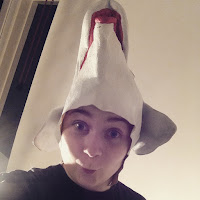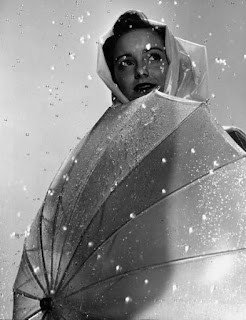 |
| Born: 1904 Died: 1984 photo by Mike Strong 'My generation came at a time when photography was advancing by leaps and bounds, creating the impulse to experiment and seek new approaches.' - Gjon Mili |
A short history
Born in now known as Albania to Vasil Mili and Viktori Cekani he grow up in Romania and then later migrated to the US in 1923. He attended The Massachusetts Institute of Technology (MIT) where he met Harold Edgerton, together they established the use of stroboscopic instruments to capture a series of movement in one photograph. In 1939 he became a free lance photographer for LIFE magazine a position he held until his death in 1984
This is a link to a video of how to use stroboscopic instruments.
He is defined as a 'Self-taught photographer' who shaped the world of dance photography. He was the first photographer to use electronic flash and stroboscopic light for dance, sports and theatre. He spent more than 40 years working for LIFE magazine.
At the time a controlled long exposure wasn't a tool that was available on cameras and create a clear image, so to create these artistic portraits he used stroboscopic lights to create these iconic pictures.
 |
| Jascha Heifetz playing in Mili’s darkened studio. Light attached to his bow traces the bow movement, New York, 1952 |
He directed a short film called "Jammin' The Blues" which was made by Warner bros in 1944. He also directed another film called "Improvisation" in 1950
Though through out his 40 years of working for the well known LIFE magazine there seems to be very little, if any interviews with this famous photographer. He's worked with all sorts of people from Pablo Picasso to Marilyn Monroe, so it seems surprising that he did very little interviews, he became the pioneer for the strobe effect in photography, yet no interviews with him seem to exist. of course I picked the one photographer who's work defined the use of long exposure before it even became a tool in photography who has no interviews accessible online or in the university library.
It's slightly shocking that a man, so renown for his work with strobe lighting, working with Alfred Hitchcock and Jascha Heifetz to not have an interview about his work, and what inspired him to create his work.
There are plenty of articles about him, which more or less repeat the same thing I have learnt about him. He was unknown to me, and after finding his work in the library (Portraits author unknown) I became fascinate by his use of long exposure, though through research I have found that he basically created it but using stroboscopic lights instead.
However Mili is not the first to use light painting in photography, the first being Étienne-Jules Marey and Georges Demeny in 1889 the painting famously known as "Pathological Walk From in Front".
 |
| Demeny and Quenu (Marey's laboratory), Pathological walk from in front, made visible by incandescent bulbs fixed to the joints, circa 1889, Archives of the college de France |
If Gjon Mili was alive today I would ask him what inspired him to create these pieces which thousands of people all around the world would see, What or who made him want to become a photographer?
 |
| Blackie Gjon Mili's cat |
Gjon Mili takes a lot of pictures of his cat 'Blackie' this could be interpreted as a self portrait of himself portrayed by his cat.
 |
| Blackie in LIFE magazine 1943 |
6 Photographs I have chosen
This photo makes me think of echoes, the residual energy we leave behind. Almost a mark we leave in the moment of movement. It's harmless, fluid, and transcendent.This photo is of a ballet dancer, on pointe.
 This photo is known as Alfred Hitchcock walk, it shows him thinking about something, or listening to what some says, and he comes up with an idea or sees something in the distance.
This photo is known as Alfred Hitchcock walk, it shows him thinking about something, or listening to what some says, and he comes up with an idea or sees something in the distance.Makes me think of the aspect of life, the moment we have an idea or see something beautiful and we have to share it with someone.
This is a picture of Mili's cat, I love this image because he looks so unimpressed with something which is happening outside the image, the look of being cautiously observant, waiting for something to happen, to the pry, alert to his surroundings.
Not so much fear, but on guard for something bad to possibly happen.
This is a picture of Pablo Picasso, seeing this image it makes me think that Picasso and Mili are good friends, possibly even best friends, someone you can do silly things with, without judgement, but have a laugh with.
 |
| A self portrait of me, in Lucy's mask |
 A lot of his photos are done in black and white and in a studio, except this photo, it's on a beach, in colour, not very serious, just a bit of fun, one of these photos was published in LIFE magazine. Mili has done photos in colour but mainly they are in a studio.
A lot of his photos are done in black and white and in a studio, except this photo, it's on a beach, in colour, not very serious, just a bit of fun, one of these photos was published in LIFE magazine. Mili has done photos in colour but mainly they are in a studio. Mili does a lot of work with Pablo Picasso, this one is part of light painting photography, here is Picasso painting with light either with a lighter or a light on a paint brush.
Mili does a lot of work with Pablo Picasso, this one is part of light painting photography, here is Picasso painting with light either with a lighter or a light on a paint brush. This photo makes me think of firework night, when you get the sparklers out and you spin the really quickly they leave a trace of light. Firework night is always special to be because it's my grandad's birthday and every year we light a firework for him, this photo brings back happy memories for me, you can't help but smile.
I love this photo because it's completely black except the light traces and Picasso him self in light, almost like there is alway a light in the darkness, you just have to look for it. Looking closely at the image you can't actually see his hand, on his face, part of his arm and part of his upper torso are in light giving chance to interpret the image better, questions I ask my self is why did Mili choose to do it this way? What was his trying to show with only part of Picasso's body in the light? What story is he trying to tell?
Light is finite, as are we, I think what Mili is trying to say is that we are finite, we don't last forever but we leave traces of our selves in life, maybe in pictures, or the memories we leave behind. So the question is, are we really finite?
This is of a modelling shoot, for synthetic rainwear. Mimi Berry in 1941 for LIFE magazine photo taken by Gjon Mili.
I like this photograph because the rain is blurry and out of focus, her face is the only thing in focus, the shadow i don't know if this is purposely there or not.
A lot of the photos I have seen Mili do aren't really for fashion but to show what he can do with the camera and the resource he has access to.
In Conclusion
Gjon Mili is a private man who either doesn't want to divulge his life to an interviewer or quite possibly he's never been asked to do one. He loves his cat and this is obvious through the fact he uses his cat a lot in his photos. He is an underachieved genius who brilliance is not completely recognised, for what he has achieved and the beautiful images he has created. Mili died doing what he loved, being experimental in his images.
References
- https://monoskop.org/Gjon_Mili 15 January 2014 author unknown
- http://edgerton-digital-collections.org/ date unknown, author Massachusetts Institute of Technology
- http://www.artfuldancer.com/lessons/topics/DanceProduction/GjonMili.htm 2016 author Mike Strong
- http://search.time.com/?q=Gjon+Mili&site=time between 2016 and 2012 Author Times magazine
- http://www.imdb.com/name/nm0587388/?ref_=ttfc_fc_dr1 Date unknown author IMDB
- http://www.imdb.com/name/nm0000033/ Date unknown author IMDB
- http://jaschaheifetz.com/ Date unknown Author Heifetz Estate
- http://lightpaintingphotography.com/light-painting-history/ both date and author are unknown





